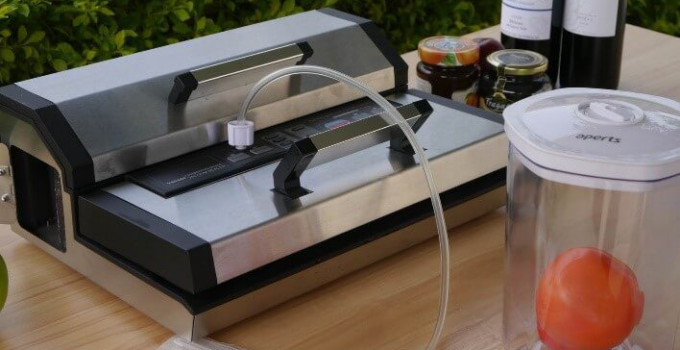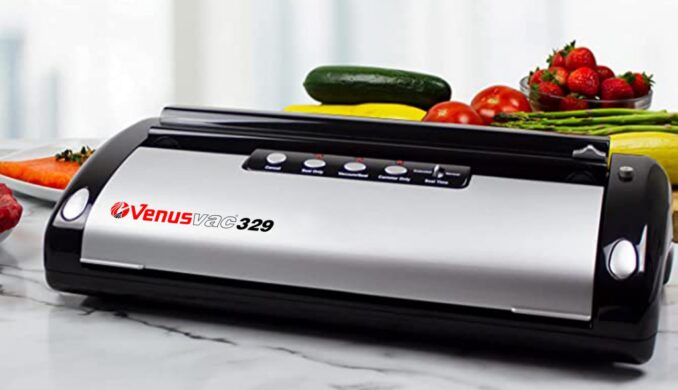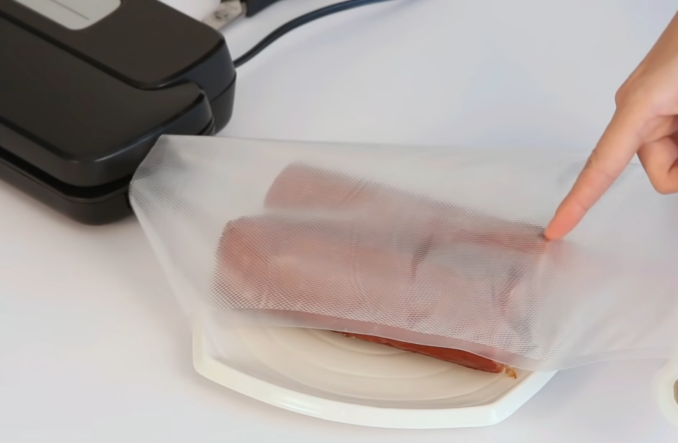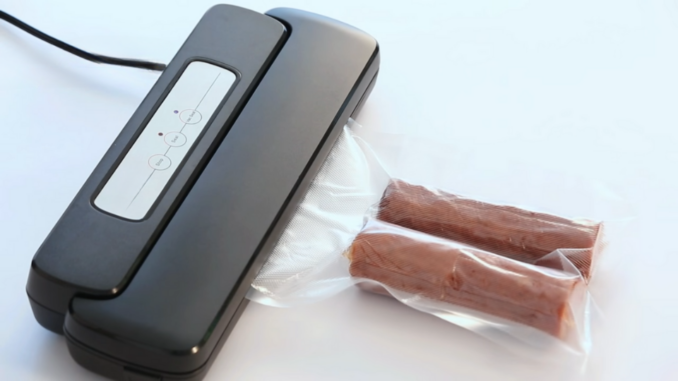Starting a list of must-have appliances for a kitchen, most people won’t immediately include a vacuum sealer. But have you had the benefit of using one yourself? Its value quickly becomes apparent, so perhaps you need it on your Christmas list or house-warming gift suggestions! And let’s not forget about the many features that people in the food industry enjoy!
Here’s a quick rundown to help you see how it aligns with the needs in your kitchen.
What is a Vacuum Sealer?
Firstly, a vacuum sealer has the ability to pull out and remove any air from a container—in this case a bag. Then, when all the air is out of the bag, it’s sealed shut using a method like a heated section that melts the plastic layers and joins them firmly together.
6 Features—What Makes this a Valuable Kitchen Investment?
Here are some reasons why this device is so attractive in home AND commercial kitchens. You’ll also see features you can research in order to compare units and identify the best for your needs.
Protecting Food from Spoiling
The main feature of a vacuum sealer is that it helps keep air away from whatever you put inside. In terms of food this means lower risk of spoilage caused by air exposure. This is desirable for anyone wishing to store food, because air encourages microorganisms to grow, which is what brings on mould and the growth of yeast.
Less air means slower spoilage, which is good news whether you want to keep your restaurant ingredients as fresh as possible, or you’re bulk buying food for your family and you don’t want it to go bad.
Pump Types
This is a feature to research beforehand, so you can buy according to your preferences or needs. The pump will determine the vacuum pressure the machine can create.
Seal Types
If your use of a vacuum sealer requires some extra peace of mind, a twin seal option comes in handy. Having two lines of seals reduces the chance of air accidentally leaking in because of a weak spot.
Accessories
Some vacuum sealers may have accessories such as a hose. This makes it possible to also create a vacuum inside a canister—an item very relevant to both residential and commercial kitchens.
Portability
Especially the models aimed at the domestic market are often compact and easy to transport. You can move your sealer to wherever you need it in the house—such as the bedroom if you’re using it for other storage purposes (see below).
Professional Results
A sealed bag of food may not have to look professional at home, but it’s certainly an advantage in a commercial setting. With food items sold in bags, straight seals have a much sleeker look than an ugly knot.
How to Vacuum Seal a Bag
Never done this before? Here’s a quick guide on vacuum sealing:
- Make sure the sealer is appropriate for the task
- Fill bag but leave enough space to create the seal—you usually need at least 5cm
- Place bag over the machine’s seal bar
- Ensure the bag is wrinkle-free where you want to seal it
- Close the top of the vacuum sealer
- Depending on the machine type, activate it—you may need to press a button or press down on the machine
- Wait for air to be removed and seal to be created
- Wait for confirmation that process is completed
Now you can remove your sealed bag.
Tips on Getting Vacuum Sealing Right from the Get-go
You’ll get more familiar with the process as you go along, but these tips will help improve the results:
- Vacuum sealers don’t simply work with any type of bag. Check the machine’s specs and requirements about which bags are appropriate, before inserting one into the sealer.
- These machines can often work with individual bags or rolls. Rolls are a practical option and lead to less waste, since you’re only using the amount of plastic you really need.
- Vacuuming liquids like sauce can be tricky, as it may be drawn out along with the air. If your vacuum sealer isn’t designed for this task, an easy remedy is to first freeze the bag unsealed, by putting it upright in your freezer. When the content is hard enough, follow the usual steps.
What Can I Vacuum Seal—and What Not?
You can vacuum almost any type of food for storage—softer items like fruit as well as firmer foods like meat, cheese or hard vegetables. Simply note the following:
- To prevent damaging the soft food or turning it into slush because of the pressure, consider the vacuum pressure and adjust settings to attain ideal results.
- Even in the vacuum, some foods carry the possibility of generating gas. Blanching them before vacuuming is an easy fix, so try this with items like asparagus or cabbage.
Chances are that once you have a vacuum sealer, you’ll use it for much more than safe food storage. Carry your portable domestic sealer to other rooms in the house and use it for:
- Vacuum sealing your mobile phone before going to the beach, so it doesn’t get wet.
- Bag collectables, from comic books to coins, to protect them.
- Vacuum seal important documents for long term safekeeping.
- Use it for storage of items you don’t use often, or clothes you put away during a certain season of the year.
- Prevent expensive jewellery from ruin brought on by air and moisture exposure.
Final Thoughts
Forget the coffee machine! Your vacuum sealer deserves a prime spot in the kitchen cupboard, because you’ll want it easily accessible. Soon you’ll be using yours in every room in the house! And obviously your commercial kitchen needs this for food prep and reducing waste.
What did you ever do without one?








